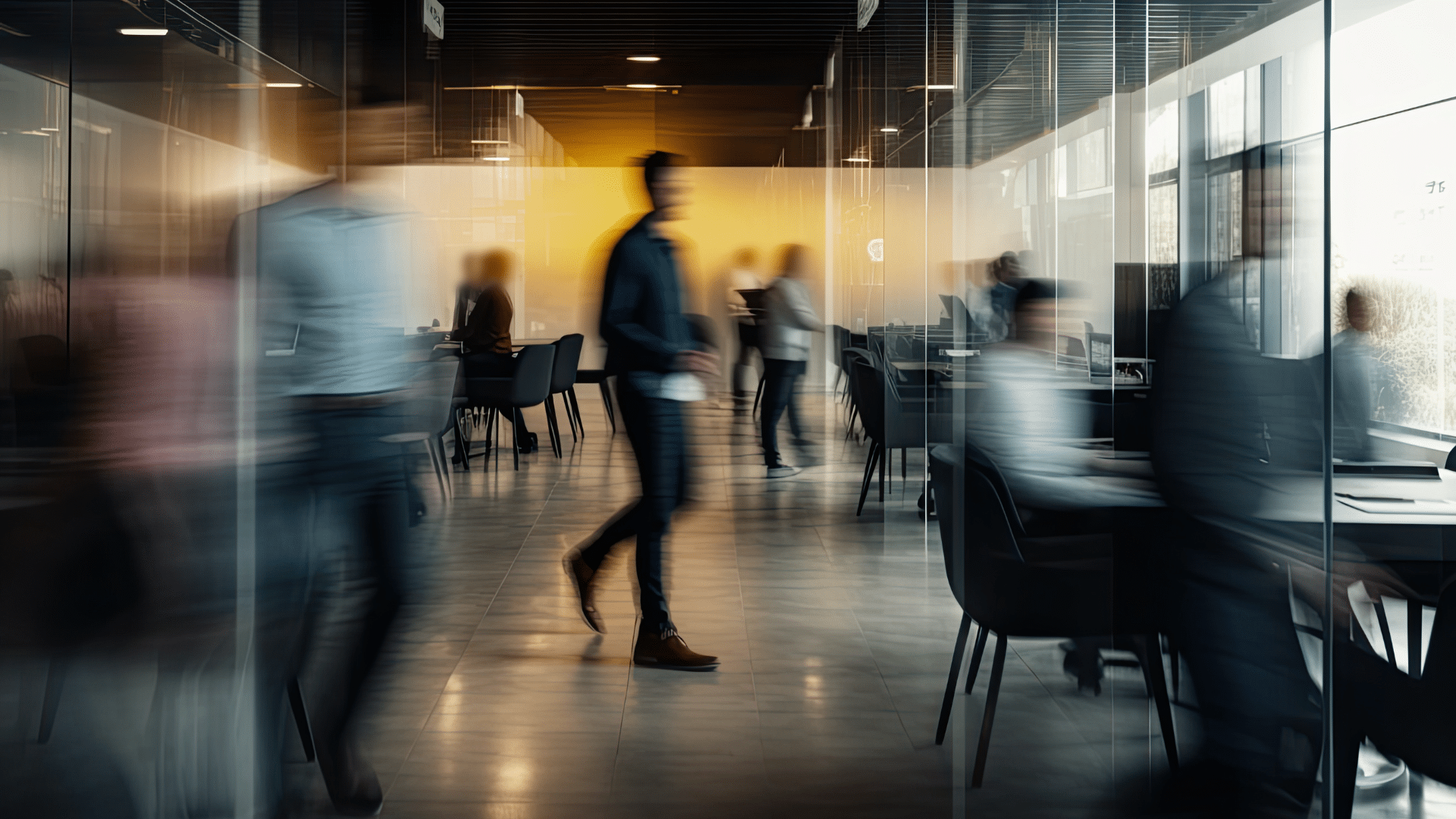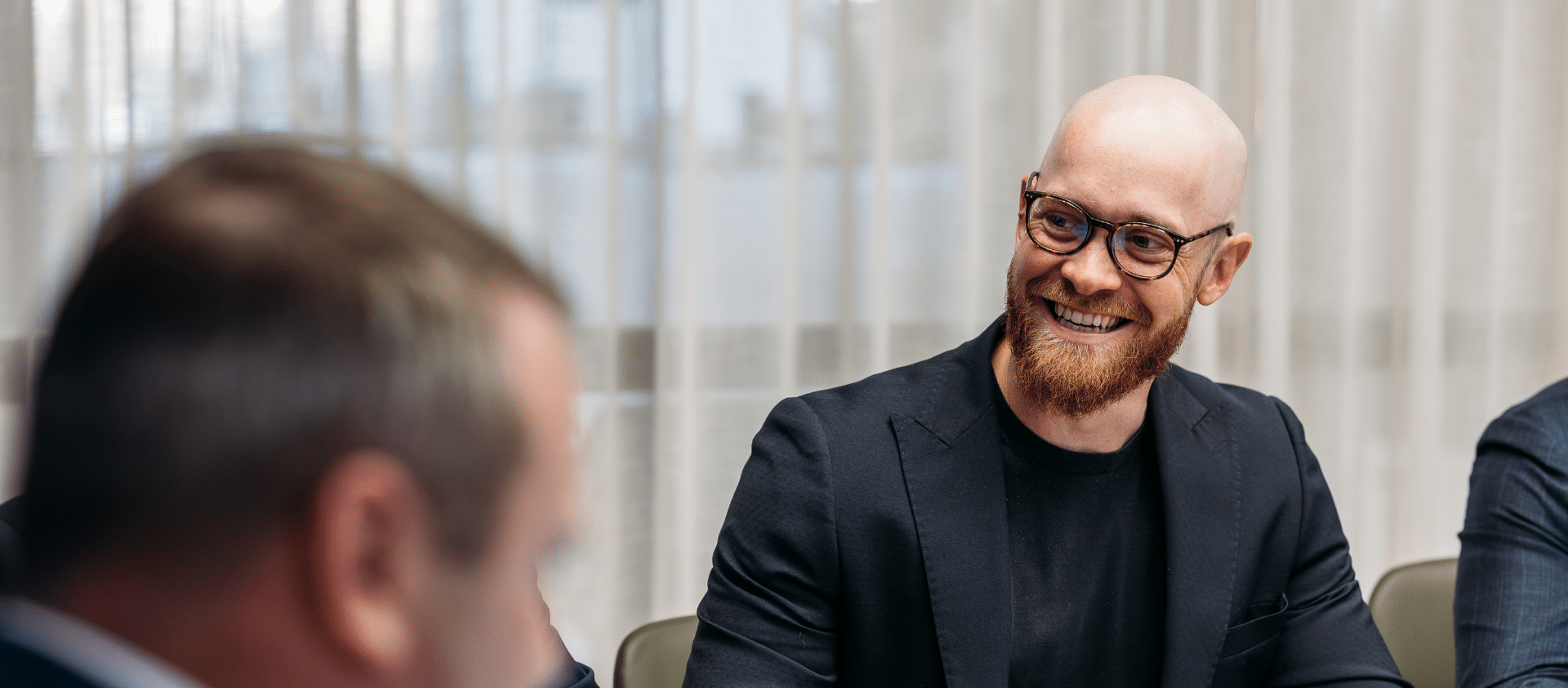
Forget the desk as a fixed point. Imagine a workplace where movement is built into the design—a natural flow of people, ideas, and energy. To get there, we need to let go of the static and shape spaces where transitions are fluid and collaboration happens organically. Spaceful’s Design Director, Michael Spinoglio, explores how to design for this dynamic movement, transforming the office into a responsive, ever-evolving environment.
Traditional workplace design was built around permanence—assigned desks, fixed meeting rooms, and structures that supported routine, predictable work. Back then, work relied heavily on desktop computers, paper files, and landline phones — with offices built around hierarchy, and desk locations tied to title. People worked in the same spot every day, and mobility wasn’t practical or expected. However, as technology has evolved and work culture has shifted toward flexibility and collaboration, the need for fixed desks has faded, making way for hot-desking, shared spaces, and mobile work setups.
Today’s work is dynamic. It’s all about flow, flexibility, and freedom of movement. Hybrid schedules, project-based teams, and a stronger focus on wellbeing, all demand a fresh approach to workplace design and planning – one that prioritises key adjacencies, putting people near the tools, teams, and resources they need to do their best work.
Modern workplaces need to support movement—through the way people work, connect, and collaborate.
How do we integrate movement into the workplace?
Creating movement in the workplace goes beyond just standing desks or walking meetings (though those are valuable too). It’s about designing an environment that supports seamless flow, much like planning how you move through rooms in a home throughout the day. Key strategies to achieve this include:
- Magnetic destinations: Modern workplaces encourage movement and engagement by creating inviting destinations throughout the space. Drawing on principles of public space design, features like artwork, water points, snack bars, and scenic outlooks help guide people from A to B.
- Zoning for flexibility: Strategic zoning supports natural flow across the workplace by offering distinct areas for focus, collaboration, and downtime. This variety encourages people to move between zones throughout the day, choosing spaces that match their task, mood, or energy level.
- Unassigned seating: With hybrid work models, many businesses are adopting some form of shared or “hot” desking, making assigned desks less relevant. In their place, distinct team ‘neighbourhoods’ are emerging – spaces where teams naturally gravitate and that can be easily reconfigured to suit shifting needs throughout the day.
- Tech-enabled mobility: Movement thrives when it’s effortless. With tools like docking stations, fully integrated hybrid meeting spaces, and mobile power banks, employees can stay productive anywhere, easily transitioning between zones.
These trends aren’t one-size-fits-all, and some businesses will continue to prefer fixed desks. What matters most is determining what works best for your organisation. A solid workplace strategy and a detailed design brief are the best tools for identifying your organisation’s unique needs before implementing trending solutions that may not be the right fit.
The future is fluid
The most effective workplaces of the future will be those that are designed not as fixed environments, but as adaptive ecosystems—spaces that can flex with teams, support diverse work styles, and encourage people to move like water, both literally and creatively. When movement flows, so does productivity, collaboration, and innovation.


